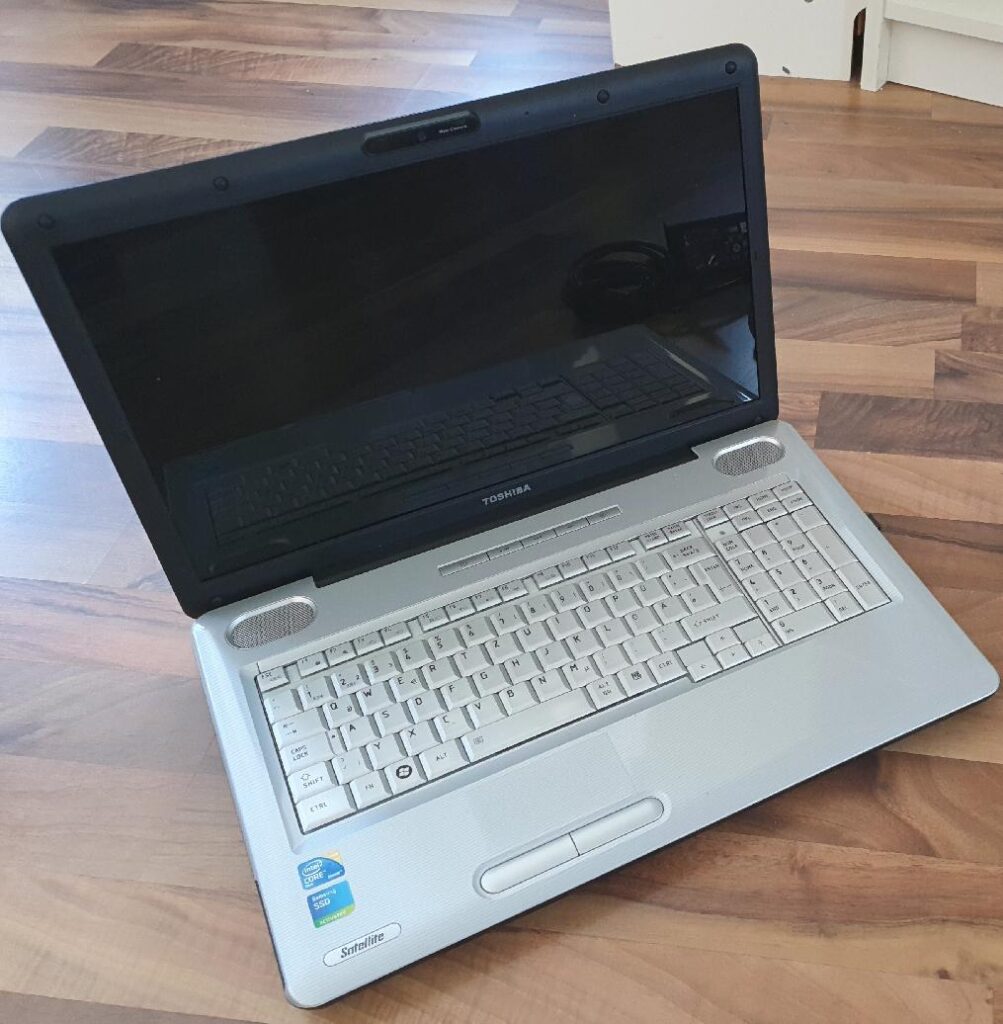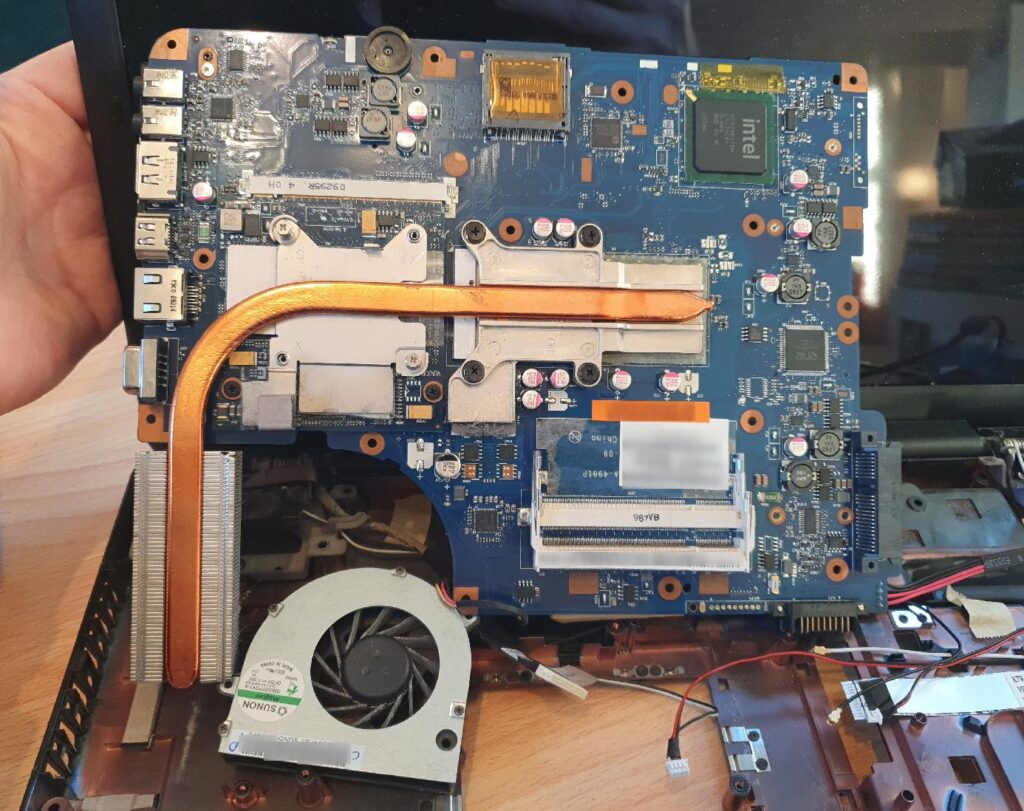
A bit of a history and hardware post today: 12 years ago, back in November 2009, I bought my last notebook I mainly used with Windows for a few years, a Toshiba Satellite L550. At €555 euros, it was a mid-priced notebook and surprisingly, it has lasted me 12 years, and was in use almost daily.
Originally shipped with Windows Vista, I upgraded to Windows 7 at some point in 2010. Some time later, I installed Ubuntu alongside and Windows was pushed to the sidelines. After a few years, I moved on to another notebook for my daily work, but due to its 17″ screen, the L550 remained in use as a video streaming device. For many years, the hardware was capable enough to stream most videos in the browser or watch local videos with VLC. So the only upgrade I made to that notebook in 12 years was switching from a 256 GB disk drive to a 256 GB SSD around 4 or 5 years ago.
But even with the SSD, the point had come after 12 years at which program startup delay compared to other devices in the household became very noticeable and not all videos, especially in the browser, would run smoothly anymore. So I replaced the device with a new HP 17″ notebook with an 11th generation Core i5 processor, i.e. a notebook with 11 hardware generations of enhancements. The price of the new notebook was almost exactly the same, which means, that prices in the mid-range segment have not significantly fallen over the decade. But obviously, many improvements have happened over time, so it’s interesting to compare the hardware of then and now to see what has changed.

Obviously, 11 processor generations means that processing power has significantly improved. I ran my ffmpeg test on the Toshiba before decommissioning it and could reach about 1/5th of the speed of that new HP notebook. For the same price, one now gets 8 GB of DDR4 RAM instead of the 4 GB DDR3 RAM back then. The HDD back then with 256 GB has been replaced with a 256 GB SSD in current notebook models of this price range. Wi-Fi has also become somewhat better, we have moved from one of the first generation dual antenna 2.4 + 5 GHz capable 802.11a card to a single antenna 802.11ac Realtek Wi-Fi card. Screen resolution has also improved. The 2009 notebook had a screen resolution of 1600x900p, which was quite high for the time. Current notebooks in this price range now come with 1920x1080p (Full-HD) resolution and a better viewing angle range. My new 2021 notebook doesn’t have a DVD drive anymore, but the battery is slightly bigger, the case is significantly thinner, and at 2.1 kg, it is lighter than the old model at 2.8 kg. And, also very important, especially for backups, USB-3 has become standard in mid-range notebooks compared to the much slower USB-2 ports back then.
The picture above shows how the motherboard of the Toshiba L550 looks like. I wouldn’t have dared to disassemble the notebook while it was still in use, as getting to that side of the motherboard requires a complete disassembly of the lower part of the notebook. But apart from being interested, there would have been little need to do that anyway, as the RAM and the hard disk where easily replaceable via trapdoors in the bottom of the device. Replacing the SSD or RAM in the new HP notebook is still possible, but it requires a leap of faith, because one has to carefully open many bottom clips after removing the screws. When comparing the internal build of both notebooks, I’d say that not a lot has changed in terms of complexity. However, manufacturers have learned how to save height.
And in case you wonder: I reassembled the Toshiba again and I was a bit surprised that everything was still working. So let’s see how long that new notebook will last.